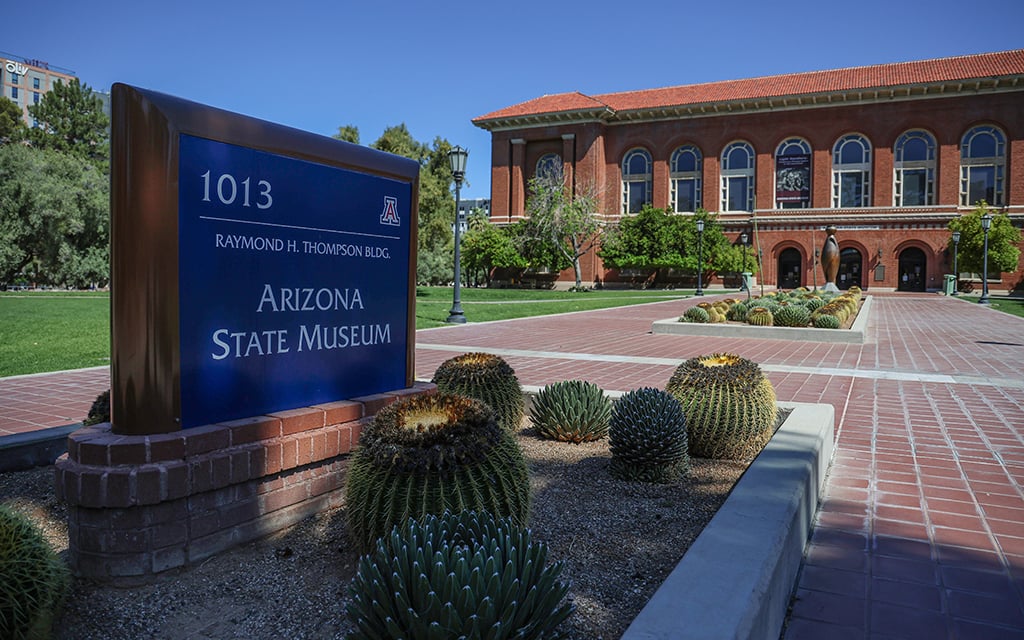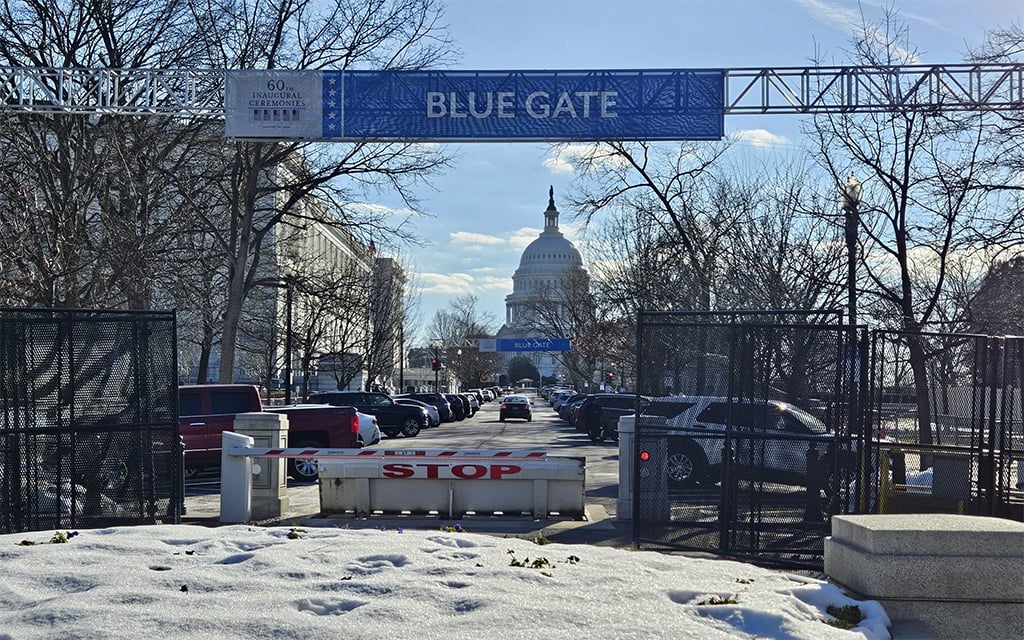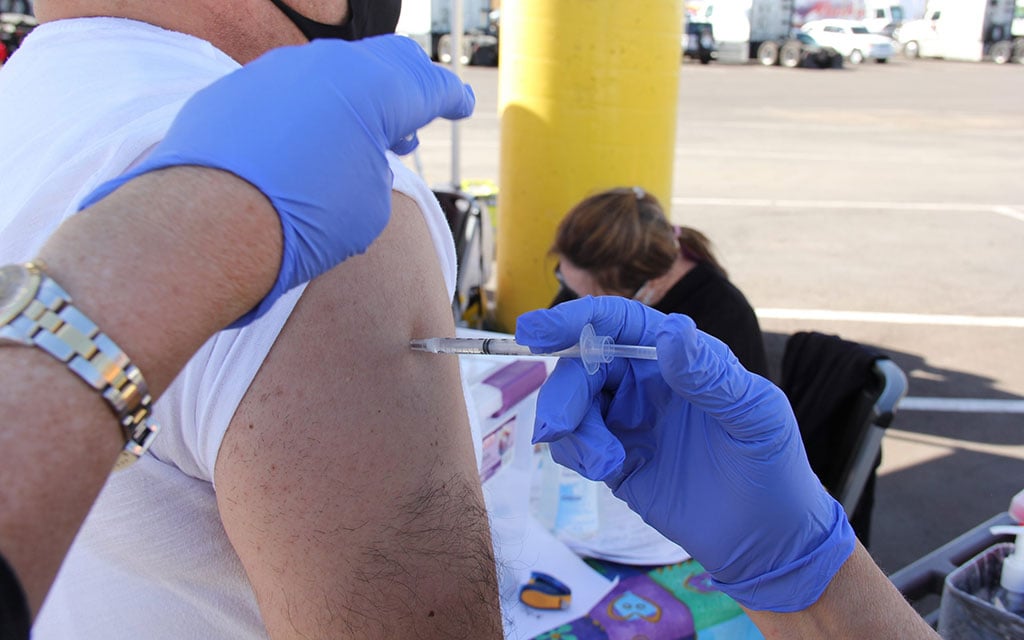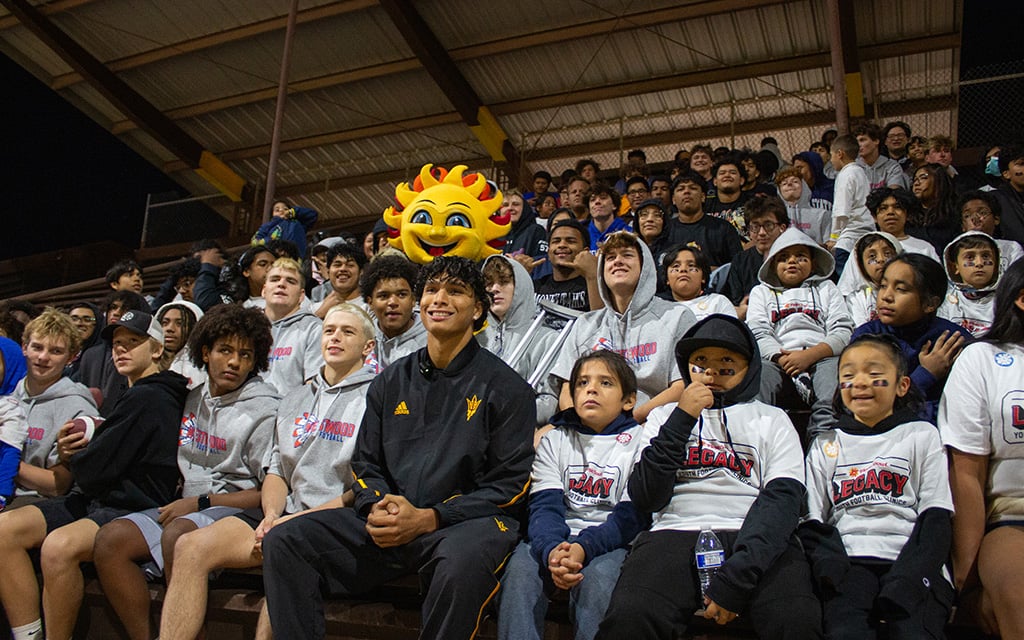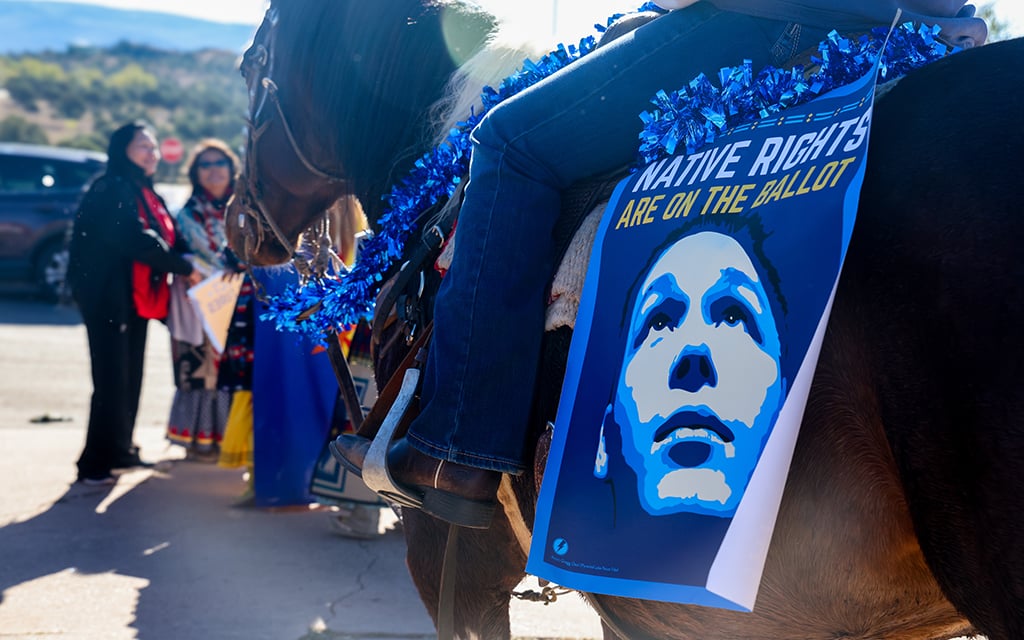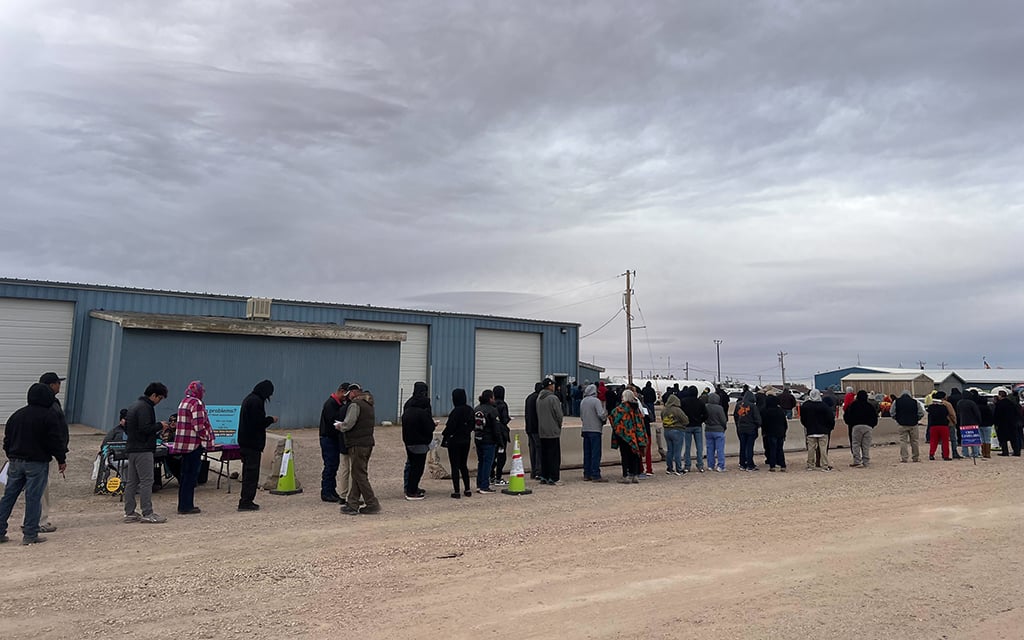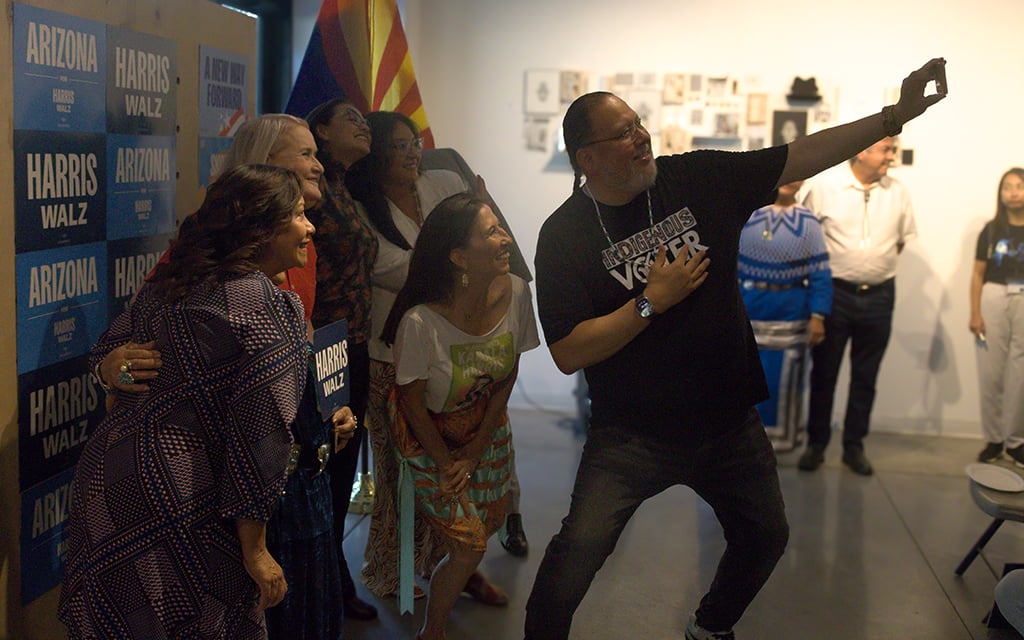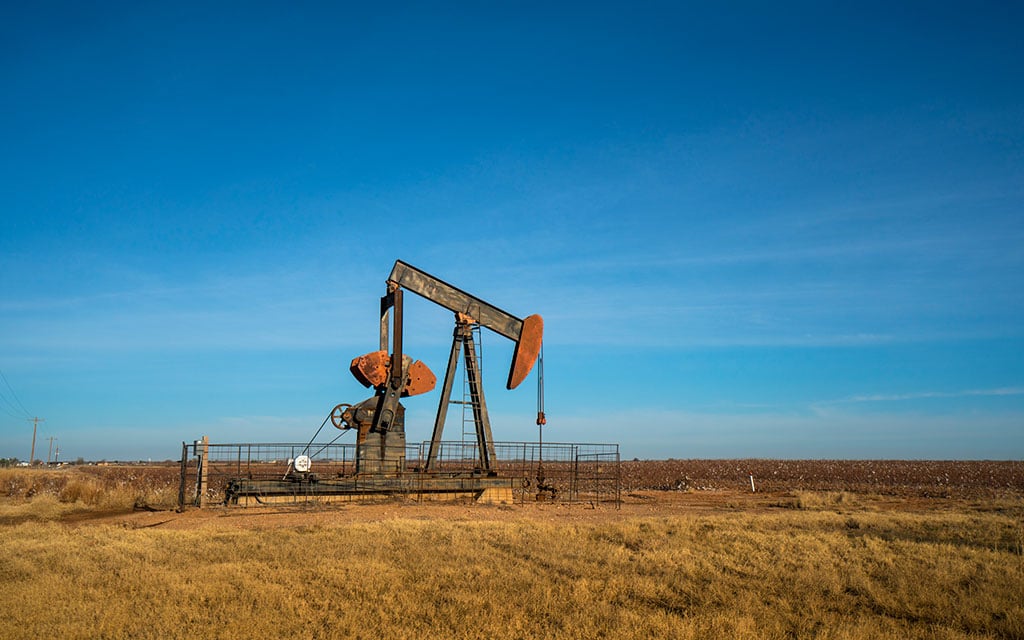‘Take repatriation seriously’: Hobbs pledges $7M to speed state museum’s work to return ancestors, artifacts to Arizona tribes
PHOENIX – The $7 million that Gov. Katie Hobbs has pledged for the Arizona State Museum will accelerate the return of Indigenous remains and artifacts, a museum official says.
Canceled inauguration parade would have put spotlight on pro-Donald Trump Navajo group
WASHINGTON – The Inaugural Parade, canceled three days before President-elect Donald Trump's swearing-in – would have featured a couple of dozen “Navajos for Trump,” activists who campaigned for Trump in Arizona and other states.
‘We’re never going to go away’: How Kenneth Shirley danced Indigenous representation into the mainstream
NEW YORK – Indigenous Enterprise founder and CEO Kenneth Shirley has been breaking barriers and bringing powwow dancing into the mainstream. Through his gift of dance, Shirley and Indigenous Enterprise brought much-needed representation to the Macy’s Thanksgiving Day Parade and beyond.
Indigenous Enterprise dancers bring colorful Native representation to the Macy’s Thanksgiving Day Parade
NEW YORK – Phoenix-based Indigenous Enterprise brought colorful representation to Macy’s Thanksgiving Day Parade. Their performance showcased powwow traditions, blending modern and traditional elements and reminded millions of the importance of Indigenous visibility and empowerment.
Native American traditional healing practices now covered under Medicaid in 4 states, including Arizona
PHOENIX – In October, the Biden administration announced an amendment that would expand Medicaid coverage to traditional Native American healing practices for the next three years in Arizona and three other states.
After years of funding with little headway, Indigenous women still missing and murdered at alarming rates
WASHINGTON – Cases of missing and murdered Indigenous women continue to climb despite government measures. Jurisdiction issues and communication fuel the fire of incompetence on the issue. How will the government improve measures to help going forward?
COVID-19 winter surge expected to hit marginalized communities hardest, experts warn
LOS ANGELES – Experts warn of an expected winter COVID-19 surge, potentially impacting marginalized communities that have faced disproportionate effects since the pandemic began. Health advocates emphasize the need for continued access to resources and vaccination efforts.
‘Natives can ball’ too: ASU’s Xavier Guillory inspires Native American youth at Fiesta Bowl Legacy Youth Clinic
SCOTTSDALE – As a member of the Nez Perce Tribal Nation, Arizona State receiver Xavier Guillory understands the importance of role models for Native American youth. It made him the ideal person to lead the Fiesta Bowl Legacy Youth Football Clinic for children living in the Salt River-Pima Maricopa Indian community.
White Mountain Apache members participate in ‘Ride to the Polls’ movement
WHITERIVER – AZ Native Vote and some members of the White Mountain Apache Tribe in Whiteriver were led by horseback and spiritual Gaan dancers to the polling station to cast their ballots for the 2024 presidential election and make their voices heard.
Voters in Navajo Nation face polling issues on Election Day; Apache County extends voting hours
NAVAJO NATION – Navajo Nation voters have historically had difficulty voting in Apache County, and this year’s general election was no different. Despite difficulties, spirits among Navajo voters remained high as candidates touted the importance of their votes.
‘Native voters can and will decide this election’: Parties fight to secure Native American votes
PHOENIX – With extremely tight polling, the Republican and Democratic parties are looking to court Native American communities that have historically been hard to reach as a way to win Arizona and the rest of the country’s vote for the upcoming November election.
Well, well, well: Taxpayers pay the price for oil and gas wells leaking methane as multiple entities work to plug them
WASHINGTON – Ownerless oil and gas wells leak methane into the environment. The plugging process isn’t simple, but it is costly and taxpayers carry this financial burden. Arizona Rep. Raúl Grijalva and the Well Done Foundation want to alleviate this strain.
